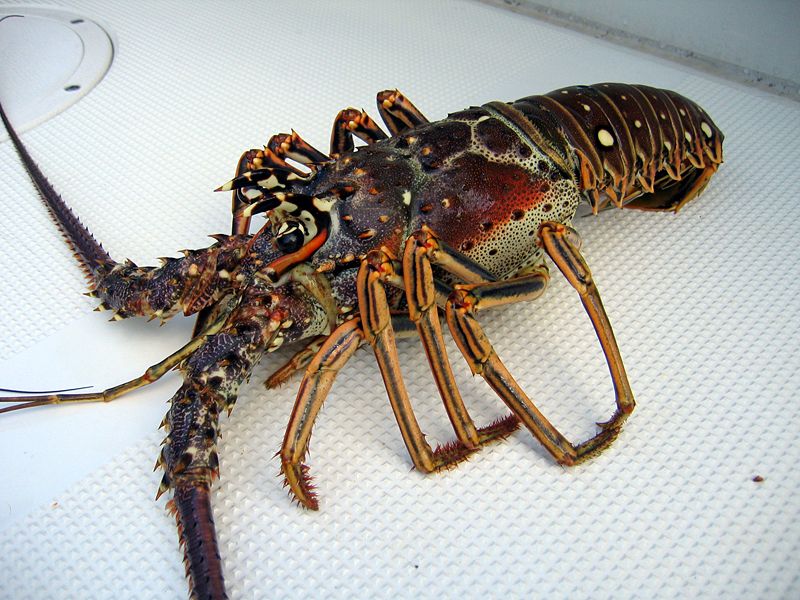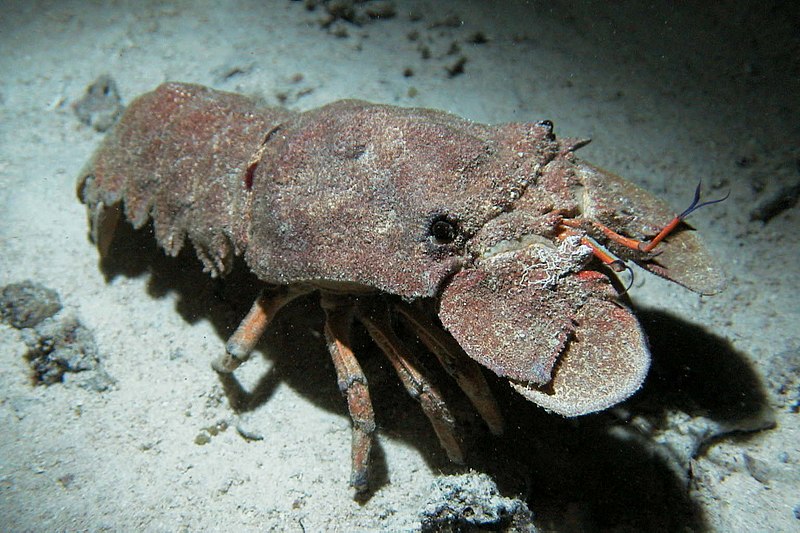Lobsters are among the most favorite sea foods served in restaurants from all over the world. Lobsters came in different colors, shapes and appearances. Here’s a list of the coolest-looking and most colorful species of lobsters in the world.
Southern Rock Lobster
Scientific name: Jasus edwardsii
Other common names: Red Rock Lobster and Spiny Rock Lobster
Range: Coastal waters of southern Australia and New Zealand
Maori name: Koura
Diet: Carnivorous – feeds on shellfish, crabs, fish and sea urchins
Habitat: reef with depths of up to 275 meters
Coloration: Dark red and orange above with paler yellowish abdomens or grey-green brown with the paler underside.
Size: can grow up to 23 cm long and can be more than 10 kg in weight
Western Rock Lobster
Scientific name: Panulirus Cygnus
Range: Australia
Color: Brownish purple to a pale color.
Size: 10 cm in length and can weigh as much as 5.5 kg
Australian Crayfish
Scientific name: Sagmariasus verreauxi
Other common names: Common Crayfish, Common Sydney Crayfish, Eastern Crayfish, Eastern Rock Lobster, Green Cray, Green Crayfish, Green Lobster, Green Rock Lobster, Marine Crayfish, New South Wales Spiny Lobster, Packhorse Crayfish, Sea Crayfish, Smooth-tailed Crayfish and Sydney Crayfish
Maori name: Pawharu
Range: Lives around northern New Zealand, the Kermadec Islands, the Chatham Island and Australia from Queensland to Tanzania
Features: Probably the longest decapod crustacean in the world
Size: Grows up to 60 cm in length
Caribbean Spiny Lobster
Scientific name: Panulirus argus
Other common names: Spiny Lobster, Bermuda Spiny Lobster, Common Spiny Lobster, Crawfish, Florida Spiny Lobster, West Indian Langouste and West Indian Spiny Lobster.
Range: Western Atlantic Ocean
Habitat: Lives on reefs and in mangrove swamps
Features: It has long, cylindrical bodies covered with spines.
Color: Generally olive greenish or brown but can be tan to mahogany with scattered yellowish to cream-colored spots on the carapace
Size: Can grow up to 60 cm in length
Mediterranean Slipper Lobster
Scientific name: Scyllarides latus
Range: Mediterranean Sea and eastern Atlantic Ocean
Feature: Edible and highly regarded as food but is now rare over much of its range due to overfishing.
Diet: Molluscs,
Size: Grows up to 30 cm long
Slipper Lobster – Ibacus novemdentatus
Scientific name: Ibacus novemdentatus
Feature: An edibble and commercially important lobster species
Size: Grows up to 30 cm in length
Slipper Lobster – Parribacus antarcticus
Scientific name: Parribacus antarcticus
Features: It can be kept as marine pet. It is edible and used as human food sources
Size: It reaches a length of up to 30 cm
Strange Blind Lobster
Scientific name: Polycheles sculptus
Habitat: Deep waters with depths of 200 – 4000 meters
Range: Can be found on both sides of the Atlkantic Ocean, in the Mediterranean Sea, and across much of the Indo-West Pacific
Axius serratus
Scientific name: Axius serratus
Range: Atlantic coast of Canada and the United States from Nova Scotia to Maryland
Feature: It is capable of living in areas which are so polluted that other benthic animals cannot survive.
See also













Very interesting! I had no idea that there were so many varieties in the lobster family. Love lobster! Cool pics...
ReplyDeleteMinister Marlene
I'm still learning from you, as I'm improving myself. I certainly liked reading everything that is posted on your site.Keep the aarticles coming. I liked it!
ReplyDeleteGransfors Bruks Felling Axe